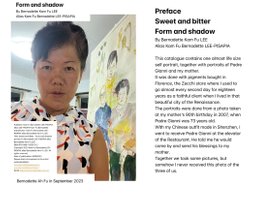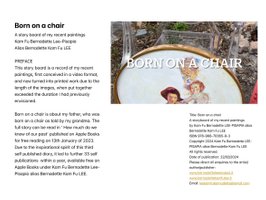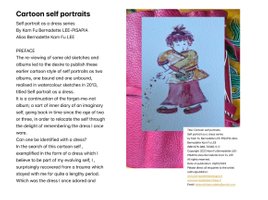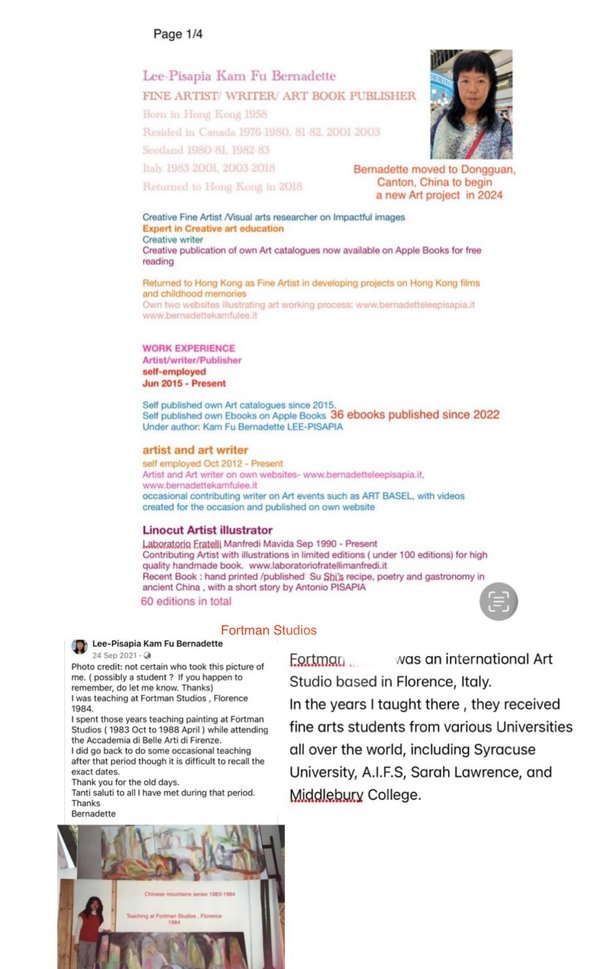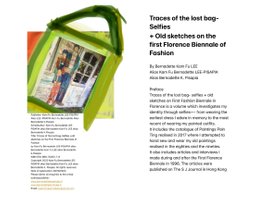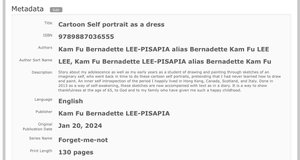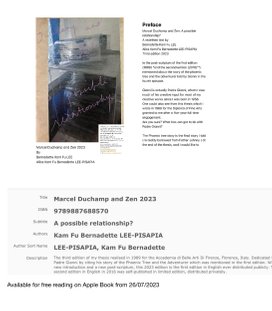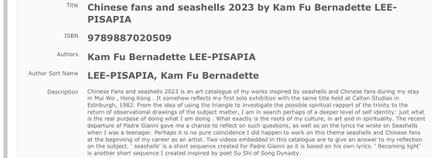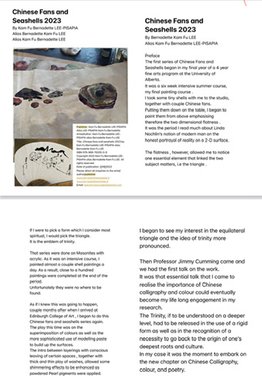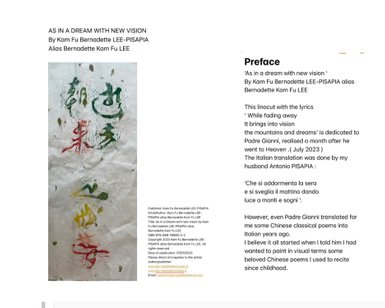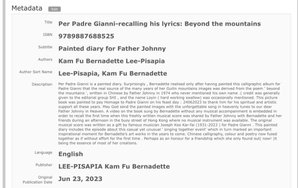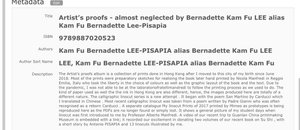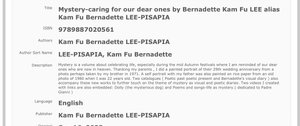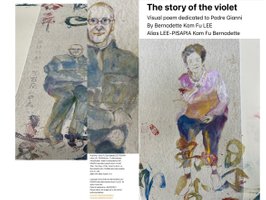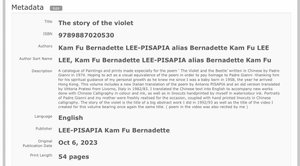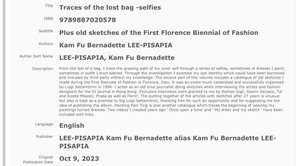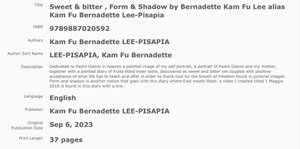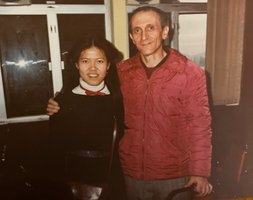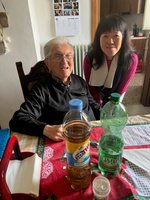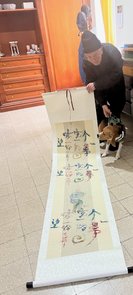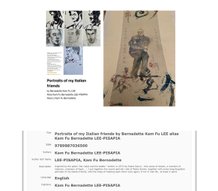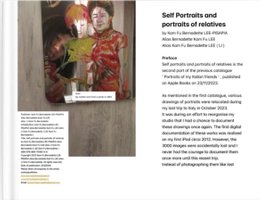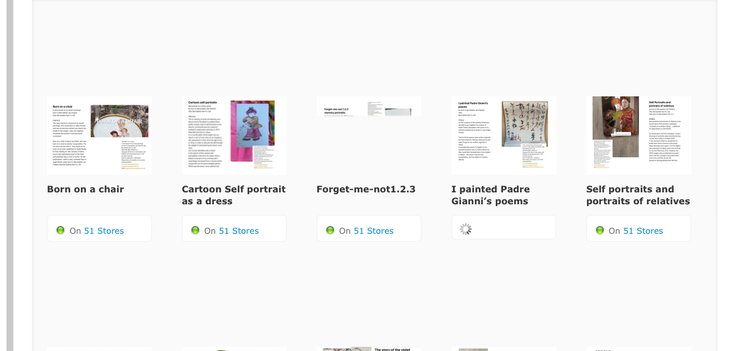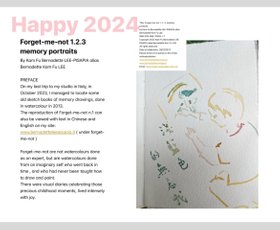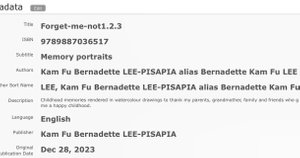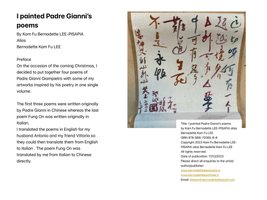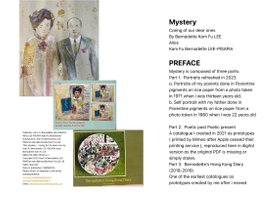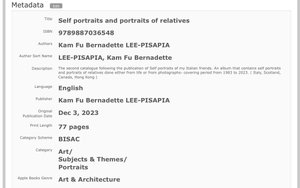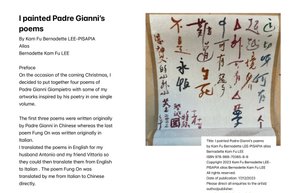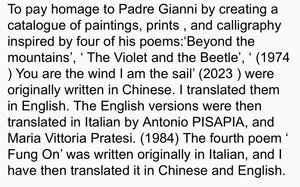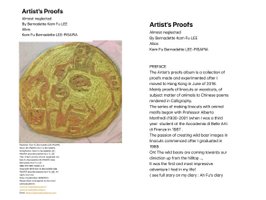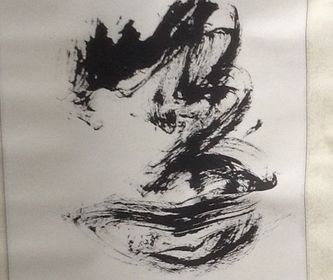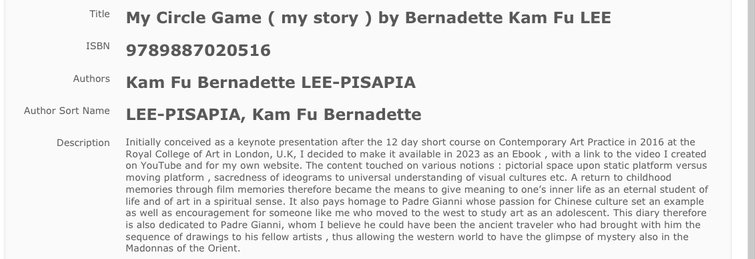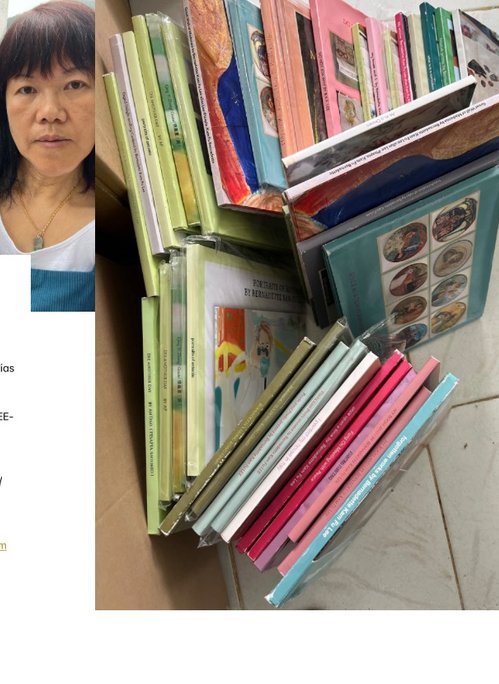BERNADETTE , known as
Bernadette Kam Fu LEE
as well as Kam Fu Bernadette LEE-PISAPIA , A FINE ARTIST and a Self-published author
Art , not for sale except for prints and artist books solely handled by Laboratorio Fratelli Manfredi.( previously known as Mavida)
Bernadette does not sell her pieces since her retrospective in Florence ( 1983-1993, Grande Quadri. Quadri Invendibili)
whoever sells you works by Bernadette after that date could be of stolen pieces.
Kindly inform Bernadette via email: leekamfubernadette@pec.it
Bernadette’s diary-
on Apple Books
for free reading
under author:
Last name: LEE-PISAPIA
first name: Kam Fu Bernadette
LEE-PISAPIA Kam Fu Bernadette or LEE Kam Fu Bernadette
( order of name used in Hong Kong and Italy
alias
Kam Fu Bernadette LEE-PISAPIA ( alias Kam Fu Bernadette LEE PISAPIA)
(order of name used in Britain, Canada )
alias
Bernadette Kam Fu LEE ( maiden name)(artist name)
LEE-PISAPIA, Kam Fu Bernadette
(order and form ( with a comma in between ) generally used in Hong Kong to distinguish
last name from first name)
Kam Fu Bernadette LEE-PISAPIA
(order generally used in Britain and Canada )
penname: Bernadette K. Pisapia, Kam Fu Pisapia, Lee-Pisapia Kam Fu Bernadette
Bernadette is the writer as well as the publisher
the name chosen for the publisher ( not a registered company ) has two
formats:
LEE-PISAPIA, Kam Fu Bernadette ( Hong Kong format), or LEE-PISAPIA Kam Fu Bernadette ( Italian format) . Therefore, the comma in between does not mean two distinct individuals as it is used to distinguish the last name and the first name in the Hong Kong format. For the other format, capital letter has been used to indicate the LAST NAME from the first name.
( from 06/09/2023, the Italain format is officially transformed to LEE Kam Fu Bernadette coniugata PISAPIA . However, the fully extended writing of my hyphenated Last Name is still maintained as my Canadian and Hong Kong identity : Kam Fu Bernadette LEE-PISAPIA)
NOTE:
email : ahfu@bernadetteleepisapia.it has previously been compromised and therefore please use the email:
kamfubernadette@icloud.com or leekamfubernadette@gmail.com to contact me.
Thank you.
Bernadette
05/05/2023
Hong Kong
student name used in Italy:
LI (last name)
Kam Fu Bernadette ( first name)
photos 40 years later:
with Padre Gianni in Dec 1983, Hong Kong
with Don Italo. Mazzano Romano, Oct 2023
videos Per Padre Gianni can be viewed on my other website:www.bernadetteleepisapia.it especially realised by Bernadette for the family of Padre Gianni in Mazzano Romano and Capranica, Italy, thanking them for their hospitality
art and life in an oriental sense
chinese character : singing, ( of birds )
composed of the pictorial image of a bird, and the beak
I began to create works based on Chinese source of inspiration in 1982.
It was Jimmy Cumming, my professor of my postgraduate year at the Edinburgh College of Art who suggested this idea
' Let me tell you what you should do ...Chinese calligraphy as an inspirational source... in order to see how a Chinese born artist would tackle the problem of Jackson Pollock...'
Professor Cumming's idea was to see how a Chinese trained artist could react to abstract expressionism in a manner more rooted in its own foundation, ( calligraphic wise ) that is, a source built on solid ground.
At least that was what I had understood.
At that age, I was purely curious at this professor's strange idea, but since being Chinese, it also means being very respectful for whatever a reputable professor has got to say.
I took that mission very seriously.
So I gave myself this task:
to search for the very roots of Chinese calligraphy, its origin as pictorial form ( from a western and eastern point of view), thus I began to start right from kindergarten, doing one single brushwork to begin with, and to investigate and examine that one single stroke in its many manifestations, using the traditional then turned creative approach, such as twisting my wrist and use a western brush.
The examination of the use of wrist with western brush works soon developed to the investigation of breath: why Chinese brush works are considered to be spiritual by the Chinese, but not Chinese painting? So the secret, I gathered, lied in precisely this: the breathing that the painter practices while he is exercising his brush work- if, the brush work is to move angels and demons, it is said, the breath has to be spiritual.
I , even though born Chinese, and love the art of Chinese calligraphy since I was a child, have never been taught how to breathe when I make a mark on the rice paper.
But since my intuition tells me that a non hesitated spontaneous brushwork is only made possible if and only if, that brush work is done by holding one's breath all the way until that last moment of breath would let go together with the very last moment of your ink.
That discovery gave me constant faith in carrying out the suggestion asked of me by Professor Cumming.
Yet another crucial problem arose, as I was also told to combine the task of investigation on oriental brush work from the oriental roots of understanding together with experiments on western understanding of colors.
That only meant I had to look from another source. I , therefore, studied Monet.
Hours I spent, in front of Monet's original works, to see how he managed to spontaneously create works of sheer beauty with perfect layering of colors, so perfect that as if they are born from pure nature.
That understanding, according to Duchamp, is retinal.
But it is more than retinal for one simple reason: that Monet, from his western eyes of seeing, had gone deep into the eastern souls.
That feeling of colors and brush works touch the hearts of orientals: it is poetic in its choice of color layerings ( I say layers, because he works as a layered expert) , and you have to know that, the orientals do not know how to layer like Monet because it is the opposite that the oriental painters are looking for: one breath, one brush work, emptiness of space
But Monet's brush works are not making space solid, and seem somehow to form one or many pure breaths together, equivalent to the poetic realm desired by the most spirtual poetic artists of the Orient
Of course Monet was conscious of what he was trying to do, because all that he did was to appropriate the oriental pictorial realm: that mystical quality of a world far away, so pure and so attractive that all materials in the world are to dissolve in one single entity: hence, the waterlilies in an all embracing sense
so while doing that, Monet became an oriental at heart yet without losing his French sense: the color sense
It was this imput and the other chinese black and white traditional brush work appreciation that put me on this road of forever discovery without ends: how to breathe the purest breath and do the purest brush work, and express a realm so poetic with the perfect means of color juxtapositions without borrowing from the west in a superficial manner
Hence, my works of many years, from 1982 to present ( with this little voice to remind myself of the following :)
be true to myself , be true to my understanding as an oriental, be true to my breath, be spontaneous with every brush work, be true to the inner expressions of colors: poetic, intuitive, and honest ( my oriental way of living color expressions )
be not afraid to be retinal- as an oriental, one could never be only retinal as the roots of an oriental lies always in poetry: one's deepest apprehesion of the world through concise ways of putting words and sounds to evoke an image, or images. ( pictograms as poetic entities )
Image and idea have always been twins, hand in hand, in the tradition
Thus, I am not afraid to be retinal because my roots are of another realm.
Hence, art and life in an oriental sense.
2016 May 5 th Castelnuovo di Porto, Rome, Italy
Thank you Professor Cumming
Condividi questa pagina
